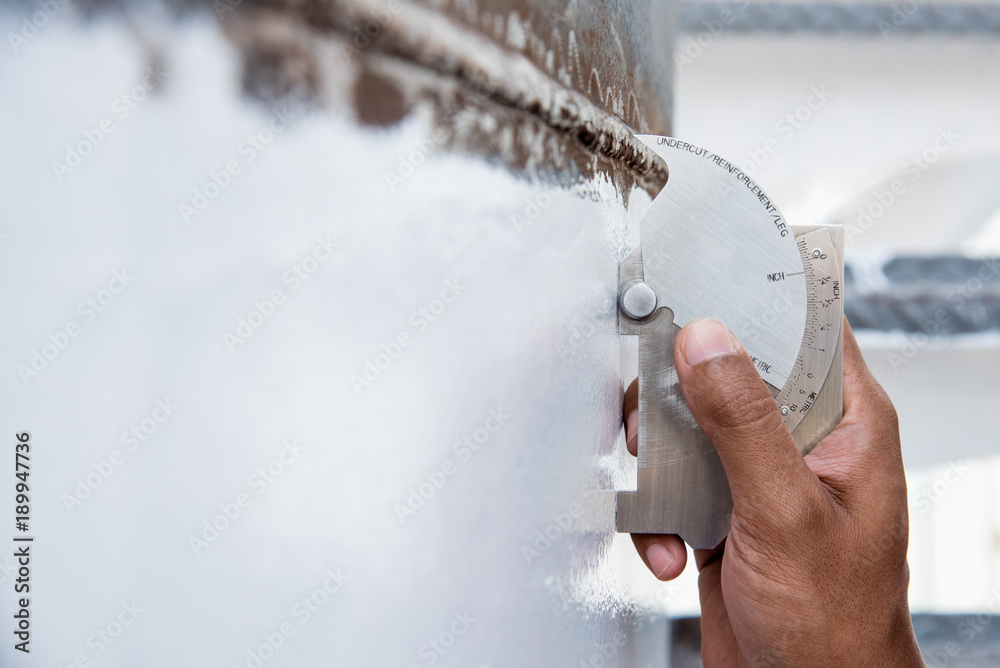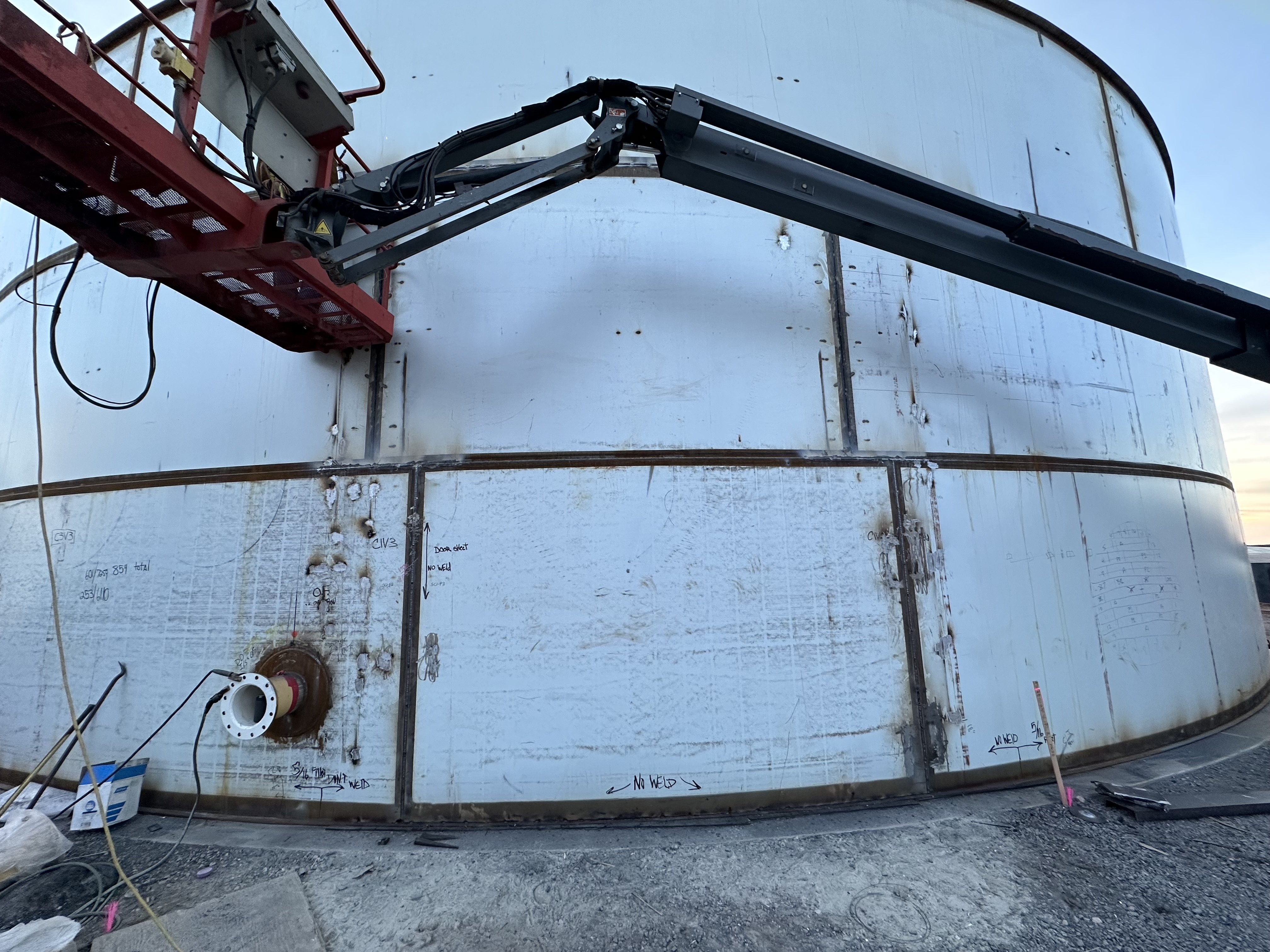
Recognizing the Relevance of Rigorous Storage Tank Welding Examination Processes in Stopping Failings and Enhancing Lifespan
In the realm of industrial operations, the importance of strenuous tank welding inspection processes can not be overemphasized. By applying numerous assessment methods, companies can discover imperfections early, therefore staying clear of expensive repercussions and extending the life of their storage containers.
Value of Welding Evaluations
Acknowledging the vital duty of welding evaluations in preserving architectural stability, these processes guarantee that welds meet established criteria and specs - Tank Welding Inspection. Reliable welding examinations are vital in the building and maintenance of containers, as they directly impact the sturdiness and security of the structures. By determining prospective deficiencies, such as inappropriate strategies or product problems, inspections alleviate the threat of catastrophic failures
Welding inspections incorporate various techniques, consisting of visual assessments, non-destructive screening (NDT), and evaluations of welding treatments. Each technique serves to confirm the quality and conformity of welds with industry policies, therefore securing both personnel and ecological passions. Furthermore, normal evaluations cultivate a culture of responsibility and quality within the labor force, making sure that all team members follow best methods.
Moreover, these inspections add to the total lifecycle management of storage tanks by determining wear or degradation early in the procedure. By dealing with these concerns proactively, organizations can extend the functional life expectancy of their properties, ultimately bring about cost financial savings and improved integrity. In summary, the importance of welding assessments can not be overstated; they are important for making certain safety and security, durability, and compliance in tank construction and maintenance.
Typical Root Causes Of Container Failures
Understanding the usual reasons for tank failures is essential for preventing catastrophic incidents and ensuring the long life of storage space systems. One common cause of tank failure is deterioration, which can dramatically deteriorate the structural honesty of containers gradually. Environmental factors, such as direct exposure to moisture, chemicals, and temperature level changes, can accelerate this procedure.
One more vital factor is inappropriate welding methods, which may lead to issues like fractures or incomplete joints. These concerns can endanger the container's toughness and result in leaks or tears. Furthermore, insufficient upkeep practices can cause unnoticed wear and tear, ultimately increasing the danger of failure.
Design problems, including inadequate density or bad product choice, can also add to tank vulnerabilities. Functional factors, such as overfilling or direct exposure to severe stress, can strain the storage tank past its desired limits.
Trick Examination Strategies
Effective assessment strategies play an essential role in reducing the dangers related to storage tank failings. A thorough method to tank welding inspection includes numerous key methods, each designed to determine potential issues and you can try these out guarantee architectural honesty.
Aesthetic inspection remains the initial line of defense, permitting examiners to recognize surface abnormalities such as splits, deterioration, or misalignment. This technique is typically supplemented by non-destructive testing (NDT) methods, which are necessary for analyzing weld quality without jeopardizing the storage tank's honesty.

In addition, magnetic fragment screening (MPT) and dye penetrant screening (DPT) work for detecting surface problems in ferromagnetic materials and non-porous surfaces, respectively. Each method has its staminas and constraints; therefore, a combination of approaches is often employed to achieve extensive assessment outcomes.
Advantages of Strenuous Examinations
While the prompt prices of rigorous evaluations may seem complicated, the long-lasting benefits substantially exceed these first financial investments. Executing extensive assessment processes not only enhances the integrity and safety of storage tank structures yet additionally lessens the danger of disastrous failures that can result in significant economic losses and ecological look at this site harm.
Rigorous inspections aid recognize prospective issues early in the welding procedure, permitting prompt corrective actions that avoid costly fixings or substitutes down the line. This proactive technique promotes a culture of high quality guarantee, where adherence to finest practices becomes instilled in functional procedures. Normal inspections add to enhanced asset durability, as they ensure that storage tanks continue to be in ideal problem throughout their life expectancy.
In enhancement, the paperwork created from these evaluations functions as a useful source for maintenance planning and performance examinations. This data-driven approach can likewise enhance operational effectiveness, resulting in decreased downtime and boosted productivity. Inevitably, rigorous evaluations not just safeguard the structural honesty of storage tanks but likewise offer substantial economic advantages, enhancing the notion that buying quality control is a smart choice for any kind of organization involved in storage tank operations.
Governing Specifications and Conformity
Regulatory standards and conformity are important elements of storage tank welding examination procedures, as they establish the framework for guaranteeing safety and security and quality in operations. Compliance with these requirements not only alleviates dangers yet also enhances the overall stability of welded structures. Various companies, consisting of the American Culture of Mechanical Engineers (ASME) and the American Petroleum Institute (API), offer guidelines that dictate acceptable practices for welding, evaluation, and testing.
These requirements mandate using qualified workers, the execution of strenuous inspection protocols, and adherence to particular welding treatments. By straightening with regulative demands, organizations can ensure that their tanks fulfill the essential safety and security and efficiency requirements, therefore lowering the probability of disastrous failures that can result in significant economic losses and ecological damages.

Moreover, governing conformity fosters a society of liability and constant enhancement within the welding and fabrication sectors (Tank Welding Inspection). Normal audits and assessments guarantee that techniques remain aligned with evolving criteria, consequently promoting lasting reliability and operational performance. Eventually, adherence to regulatory requirements not only shields possessions but additionally improves the lifespan of bonded tanks, guaranteeing they serve Learn More their designated purpose successfully over time
Verdict
In conclusion, rigorous storage tank welding assessment processes play a vital duty in preventing failures and expanding the lifespan of storage structures. By identifying potential shortages with various assessment strategies, companies can mitigate risks associated with container stability.
Comments on “Exactly How Tank Welding Inspection Prevents Future Structural Failings”